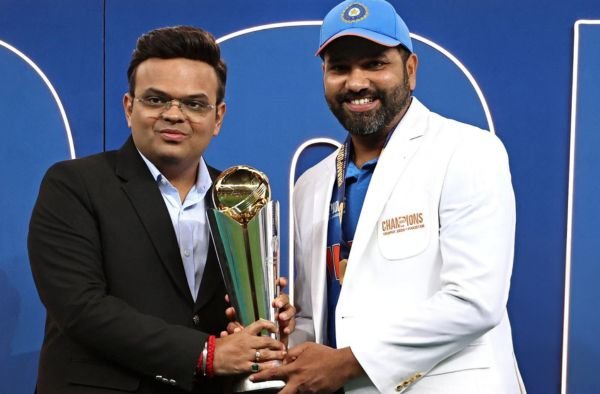Ever watched a One Day International (ODI) match and wondered why batters seem to have a field day, especially in the final overs? There’s a reason! A key rule might be lending more help to the batters than bowlers, and the International Cricket Council (ICC) is now seriously thinking about changing that.

The buzz in the cricket world is about a possible tweak to the two-ball rule in ODIs. Let’s break down what that means, why it’s an issue, and how changing it could impact the game we all love.
What Is the Two-Ball Rule in ODIs?
If you’re not too deep into the technical side of cricket, don’t worry—this is simpler than it sounds.
Since 2011, ODI matches use two different balls—one from each end. That means a ball is used for only 25 overs instead of the full 50 like in the older format. Naturally, this means balls stay newer and harder for longer.
What’s the big deal about that? Well, let’s take a look.
Why the Two-Ball Rule Was Introduced
Back in the day, bowlers often struggled with an old, scuffed-up ball, especially in day-night games where dew made it harder to grip. The introduction of two new balls was meant to offer a balance: one white ball from each end that stays in better condition, making it easier for consistent play throughout the game.
But Here’s the Problem…
While the idea sounded good on paper, it’s sparked a growing concern over the years.
- Swing and Reverse Swing Diminished: Because each ball is only 25 overs old, it doesn’t wear out enough to reverse swing—a weapon that fast bowlers, especially from places like Pakistan, have historically mastered.
- Flat Pitches + Hard Balls = Batter’s Paradise: With the ball not deteriorating much and pitches already favoring batters, scoring has inflated dramatically.
- Death Over Bowling Becomes Tougher: Bowlers struggle to grip or get variation with a still-fresh ball in the final overs, leading to more boundaries and fewer wickets.
Ever wondered why 300-plus scores have become so common in ODIs? This rule is a big contributing factor.
Why the ICC Is Rethinking This Rule Now
In recent months, more and more experts—including cricket legends—have voiced concerns. Even former Indian coach Ravi Shastri joined the conversation, pointing out that a slight dulling of the ball can dramatically change the game’s balance, especially in the death overs.
The 2025 ICC Champions Trophy has put this under a bigger spotlight. Hosted in Pakistan, where reverse swing is almost a national treasure, there’s talk that the Asian Cricket Council (ACC) might lobby hard for a change back to the single-ball rule.
What Would Changing the Two-Ball Rule Mean?
If the ICC decides to scrap the two-ball format, it could bring back the traditional single ball used for the entire 50 overs. Here’s how that could affect the game:
1. Reverse Swing Revival
Bowlers love an older ball because it swings unpredictably at high speeds—a nightmare for batters. Pakistan, in particular, is known for mastering this art. Bringing back one ball could reintroduce this thrilling feature into ODIs.
2. Greater Role for Spinners
As the ball gets older, it offers more grip—even the shine fades. That’s ideal for bowlers who rely on variations. Spinners could play a bigger part, especially in middle and late overs.
3. Levelling the Playing Field
Let’s be honest: the balance between bat and ball in ODIs has seriously tilted toward batters. Changing the rule could offer a fairer fight, leading to more exciting, nail-biting matches.
4. Strategic Changes
Captains would have to rethink field setups, bowling changes, and powerplay tactics. With ball behavior changing throughout the innings, teams will need sharper planning and on-field awareness.
Is It Just About the Ball?
Well, not entirely. Cricket today has become a batter-dominated format due to:
- Shorter boundaries
- Bigger bats
- Powerplays with restricted fielders
- Flat, batter-friendly pitches
So, changing the two-ball rule won’t fix everything, but it could be a step toward restoring some balance. Think of it as tuning an instrument—you may not change the whole song, but you’ll definitely improve the harmony.
What Experts and Fans Are Saying
The cricketing community has been vocal. Some support the move, calling it long overdue. Others worry that batters might struggle again in the late overs, especially if conditions are tough (like under lights or in humid climates).
But the common thread? Everyone wants fairer matches that keep fans at the edge of their seats. And that’s exactly what this adjustment could offer.
What Happens Next?
According to recent updates, the ICC’s Cricket Committee is currently discussing the topic.
Until then, the debates will continue—fans, former players, coaches—everyone has an opinion.
Final Thoughts: Is It Time to Let Go of the Two-Ball Rule?
Cricket, like life, keeps evolving. Rules change, strategies shift, and playing styles adapt. The two-ball rule seemed like a good solution in 2011. But in 2024, it might be time to rethink it.
After all, cricket is at its best when both batters and bowlers can shine. Bringing back the single ball could give us games that are not just high-scoring but also deeply competitive and unpredictable.
So, what do you think? Should ODI cricket stick with two balls or go back to one? Drop your thoughts in the comments—we’d love to hear from passionate fans like you!
Quick Recap
- What’s Happening? ICC is reviewing the two-ball rule in ODI cricket.
- Why Now? Growing concern that it favors batters too much and limits reverse swing.
- What’s at Stake? Game balance, bowler effectiveness, and viewer excitement.